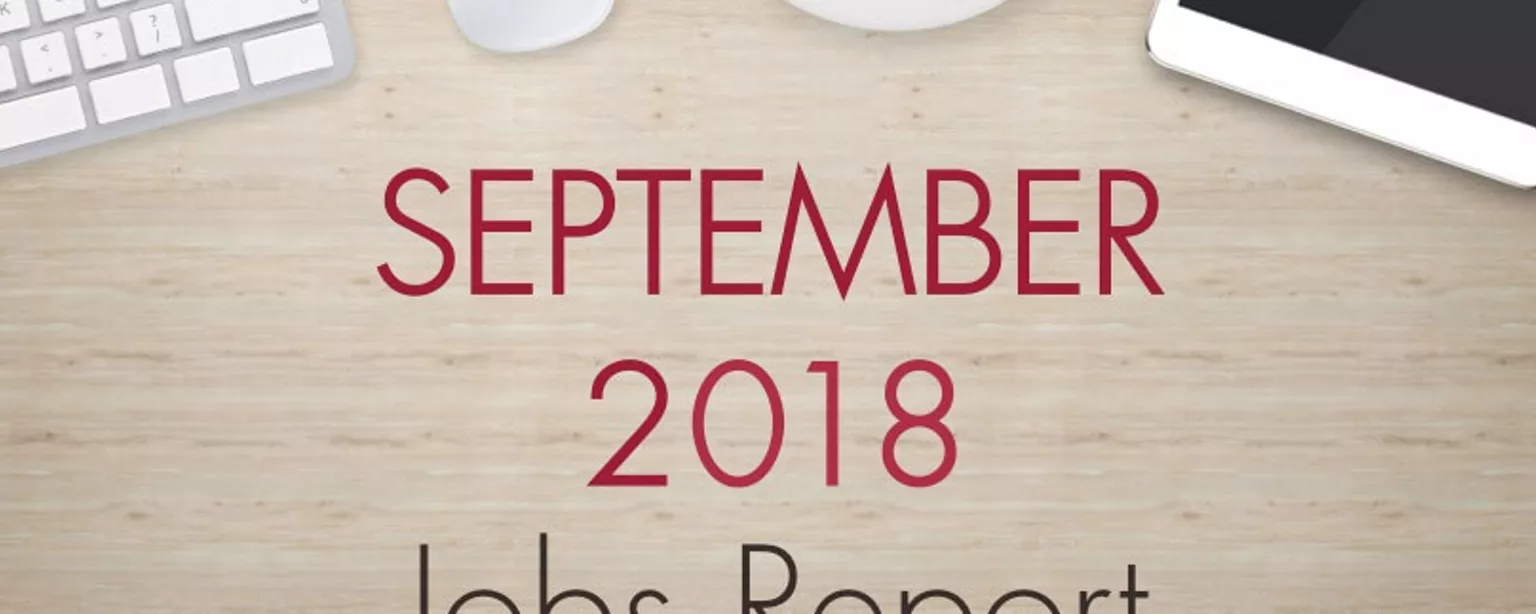Employers added 134,000 jobs in September, according to the latest jobs report from the Bureau of Labor Statistics (BLS). However, the bigger headline is that the national unemployment rate declined to 3.7 percent, bringing it to its lowest level since December 1969. The unemployment rate for college-degreed workers who are 25 or older — the most in-demand group of professionals — also edged down to 2.0 percent.
Employers have expanded payrolls by nearly 1.9 million positions since the start of 2018. That figure includes adjustments for July and August, which were revised upward by 87,000 jobs. Job gains have averaged 208,000 per month this year.
The following sectors added the most jobs in September:
- Professional and business services: 54,000 jobs added
- Transportation and warehousing: 23,800 jobs added
- Construction: 23,000 jobs added
- Education and health services: 18,000 jobs added
- Manufacturing: 18,000 jobs added
Meanwhile, there were 6.9 million open jobs in July, according to the Latest Job Openings and Labor Turnover Survey (JOLTS) from the BLS. This is a record high.
What employers need to know
The end of the year is drawing near, which means time is running out to use your remaining hiring budget. You also want to have your team set and ready to launch into new projects come January.
Be careful not to let these pressures drive you to hire in haste. You still need to evaluate candidates thoroughly to avoid the risk and cost of a bad hire.
The challenge, of course, is not letting your recruiting process drag on too long, or you face another risk: letting top talent slip through your fingers.
How can you conduct a smart and speedy hiring process? For one, create accurate job descriptions to help ensure you attract professionals with the right skills and experience. Also, be prepared to talk compensation with top candidates during interviews. Ask questions like, “What management style do you thrive under?” to assess a person’s fit with your corporate culture.
After interviews, gather stakeholders’ feedback promptly and set a firm deadline for deciding whether to extend an offer. Most important, stay in touch with potential hires, so they know you’re still interested as you finalize your decision. Actions like these can help you to recruit swiftly and make well-considered hiring decisions.
What job seekers need to know
Professionals with in-demand skills have an array of opportunities to pursue in the current market, with low unemployment and millions of open jobs. Leading employers, especially in hot cities and industries, are working very hard to snap up top candidates before competitors do.
You may face some pressure during the hiring process to quickly sign on the dotted line. But you shouldn’t feel compelled to accept an offer just because an employer is pulling out all the stops to impress you. You need to stop and thoroughly consider whether the job, and the organization, are right for you.
Competitive pay, benefits and perks are important to your job satisfaction, of course, but your fit with a company’s culture is, too. So, during the interview process, ask hiring managers to describe the workplace culture and what they think is unique about it.
Find out if the company emphasizes work-life balance and how it helps employees achieve it. Inquire about professional development and advancement opportunities to get a sense of how you might grow at the firm.
In short, take time to determine whether the employer is really offering what matters most to you in a job offer. If not, then scan the horizon for another opportunity. You may not need to look far.
Let us help you find the right fit
Monthly Jobs Summary: September 2018
SEPTEMBER 2018
U.S. BUREAU OF LABOR STATISTICS MONTHLY JOBS SUMMARY
134,000 JOBS ADDED*
3.7% UNEMPLOYMENT RATE*
2.0% UNEMPLOYMENT RATE FOR COLLEGE GRADS**
UNEMPLOYMENT RATE OVER THE PAST 12 MONTHS*
| Unemployment Rate | Unemployment Rate for College Grads** | ||
|---|---|---|---|
| OCT '17 | 4.1% | 2.0% | |
| NOV '17 | 4.1% | 2.1% | |
| DEC ’17 | 4.1% | 2.1% | |
| JAN ’18 | 4.1% | 2.1% | |
| FEB ’18 | 4.1% | 2.3% | |
| MAR ’18 | 4.1% | 2.2% | |
| APR ’18 | 3.9% | 2.1% | |
| MAY ’18 | 3.8% | 2.0% | |
| JUN '18 | 4.0% | 2.3% | |
| JUL ’18 | 3.9% | 2.2% | |
| AUG '18 | 3.9% | 2.1% | |
| SEP '18 | 3.7% | 2.0% |
*Source: Bureau of Labor Statistics
**College-degreed workers 25 and older
See what these results mean for job seekers and employers at roberthalf.com/blog.
ARE YOU UNDERPAID?
46% of workers think they are underpaid in their current job.
Source: Robert Half survey of more than 2,800 workers
© 2018 Robert Half. An Equal Opportunity Employer M/F/Disability/Veterans.






